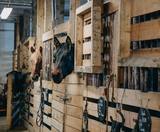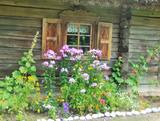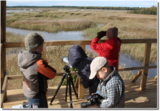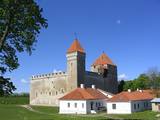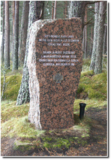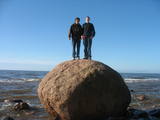| Нo | Название | Описание |
|---|---|---|
|
В этом хозяйстве на острове Кихну предлагаются традиционные для Кихну блюда, приготовленные из выращенных в хозяйстве овощей и собственноручно пойманной рыбы. |
||
|
В 19 веке на побережье у Скулте выросла маленькая рыбацкая деревушка. Название Звейниекциемс (Рыбачий поселок) произошло от основного занятия его жителей. В 1967 году часть Скултского рыбачьего поселка присоединилась к городской части Скулте. Сегодня в Звейниекциемсе работает порт Скулте, который был торжественно открыт 7 октября 1939 года. Камень, который в качестве свидетеля строительства порта выбрал Карлис Улманис, все еще находится в Звейниекциемсе, а в порту активная деятельность ведется по сей день. Между портом Скулте и пляжем в Саулкрасты находится каменистый пляж Звейниекциемса. |
||
|
Городище Бусе (Маткулес) находится в изгибе берегов реки Имула. С него, на противоположный берег Имулы открывается один из самых живописных видов на речушки Курземе. Видом лучше всего любоваться в безлистный период, когда ландшафт не закрывает береговая растительность. В округе разбиты тропы для пеших прогулок. |
||
|
Vidzemē, Valmiermuižā, 19.gs. celtā ēku kompleksā, ko iekļauj mūra žogs, atrodas Valmiermuižas stallis un Valmiermuižas jātnieku skola. Tajā saimnieko Jurašu ģimene - zirgkopju, zirgu selekcionāru un vetārstu ģimene daudzās paaudzēs. Ir iespēja doties izjādēs, ekskursijās, kā arī tiek rīkotas radošās nometnes bērniem. |
||
|
Eine der eindrucksvollen Reliefgestaltungen im Baltikum. Bei Sigulda erreicht das Urstromtal eine maximale Tiefe von 85 m ( Breite ung. 1 km). Schöne Sandsteinaufschlüsse aus dem Devon ist ein Anziehungspunkt. |
||
|
Музей основан в 1974 г. Это один из самых крупных (194 га) европейских этнографических музеев под открытым небом с самым большим числом экспонатов (91420). Экспозиция состоит из отдельных хуторов, усадеб, деревень и поселка, где демонстрируется древняя архитектура, культура, быт, садовые, огородные и цветочные культуры различных этнографических регионов Литвы. |
||
|
For the first time Vihula Manor is mentioned in 1501. The complex you can see now has been made after 1810. It was finished in 1880. Now here is an excellent hotel, SPA complex, a restaurant and more. Around the manor is a park. |
||
|
Atpūtas vieta Gaujas upes kreisajā krastā, pusceļā starp Virešiem un Aņņu tiltu (Gaujiena-Valka; P23). Pieejams galds maltītēm, ugunskura vieta, sausa malka, telšu vietas, tualete. |
||
|
Dvietes un netāli esošais Skuķu ezeri ir vieni no teritorijas grūti pieejamajiem palieņu ezeriem – lielākie šāda tipa
ezeri Latvijā. Palu laikā pārplūst, savienojoties vienā lielā ūdenskrātuvē.
|
||
|
Строительство здания Кемерской школы
закончено в 1934 г. (архитектор К.Цинатс). Это одно из
немногих зданий школы в Латвии, где сохранился
исторически ценный интерьер и экстерьер – в т.ч.
аллегорические образы на фасаде здания.
|
||
|
Хозяйство Tihuse на острове Муху занимается разведением лошадей, а также предлагает аутентичную еду, кроме того, тем, кто страдает от различных пищевых непереносимостей, будут предложены специальные блюда. Одним из любимейших развлечений здесь является прогулка верхом с последующим пикником. В качестве особого лакомства предлагаются пирожные из чечевицы. |
||
|
Каниерис сильно заросшее и
мелководное приморское озеро, уровень
воды которого неоднократно регулируется в
20 столетии (цель получение земель для
сельскохозяйственного использования). В
озере насчитывается 14 островов, девять из
которых являются естественными, а
остальные искусственно созданными для
привлечения гнездящихся водоплавающих
птиц. Каниерис одно из богатейших птичьих
озер Латвии. Еще в 1964 г. здесь был создан
орнитологических заказник Каниерского
озера, в 1989 г. озеро включили в список
важных птичьих объектов Европы, а в 1995 г.
в список Рамсарской конвенции. На юго
восточном берегу озера расположена
Лодочная база (по озеру Каниерис
разрешается ходить только на прокатной
лодке). В 2009 г. на полуострове Риекстусала
построили башню для наблюдения за
птицами.
|
||
|
История каменного замка уходит к 13-ому веку . В подвальных залах замка постоянные выставки, которые представляют природу и историю Сааремаа. В замке с мая по август действуют ремесленные мастерские (кузница, обработка стекла, гончарная мастерская, обработка камня), предлагая гостям как усладу для глаз , так и радость творчества для рук. Интерес представляет и расположенный поблизости тир для стрельбы из лука, где после попадания в цель можно самому чеканить монеты. Из филиалов Сааремааского музея советуем посетить хутор-музей Михкли на западе Сааремаа (деревня Вики, волость Кихельконна; +372 454 6613, www.saaremaamuuseum.ee), где можно увидеть как архитектурные достопримечательности, так и объекты культурного наследия. |
||
|
Место памяти борьбы финских
егерей в Клапкалнциемсе. Место, где
захоронены пять павших финских солдат во
время Первой мировой войны. В мае 2004
года установили по новой первичный,
установленный в 1929 году и снесенный в
Советское время памятник. В
Лапмежциемском музее можно посмотреть
фотографии и получить более подробную
информацию о финских егерях.
|
||
|
Piedāvā ļoti gardus Lietuviešu tradicionālos ēdienus. Var pieņemt līdz 300 personām. Ir āra terase un dzīvā mūzika. Pieņem bankas kartes, pieejama autostāvvieta. |
||
|
The tower is beyond the Oleri estate, in the small Oleri swamp, where at the end of a wooden footpath you can step upward a bit and learn about the landscape of a transitional swamp. This is part of the ZBR.
|
||
|
Šo sakrālo celtni uzskata par vecāko Zemgales baznīcu, kas joprojām pilda savu pamatfunkciju. Tās celtniecību uzsāka 1567. g. un pēc nopostīšanas atjaunoja 1614. g. Pēc poļu - zviedru un Ziemeļu kara to atkārtoti atjaunoja 1815. g. Dievnamu var apskatīt arī no iekšpuses. |
||
|
Covered with rocks and with small capes and inlets, this is the eastern shore of the Bay of Rīga and the only place in Latvia where sandstone outcrops are found. These are the result of the abrasive effects of waves between Tūja and Vitrupe. Among the most distinguished of these outcrops are the Veczemi cliffs, which are less than half a kilometre long and up to four metres high. The area has been improved for tourists. It has to be said that this part of the shoreline changes very often, particularly after large storms.
|
||
|
Находится около моста через Салацу. Предлагаются блюда традиционной латышской и европейской кухни. Латышская кухня: Килька с яйцом, рыбный суп, крестьянский завтрак, жареные масляные бобы, цыплячья печень с картофельным пюре, бефстроганов по-курземски, крестьянская похлебка в горшочке, тонкие и картофельные блины с варением, слойка из черного хлеба. Особое блюдо: Открытый пирог от нашего дома. |
||
|
В музее предлагается познавательный рассказ о местных традициях производства и продукции ООО «Наукшени» - разных маслах (рапсовое, льняное), 10 видах безалкогольных напитков (квас, минеральная вода), а также предлагается дегустация домашнего вина. Приобретение различных продуктов. |
||





